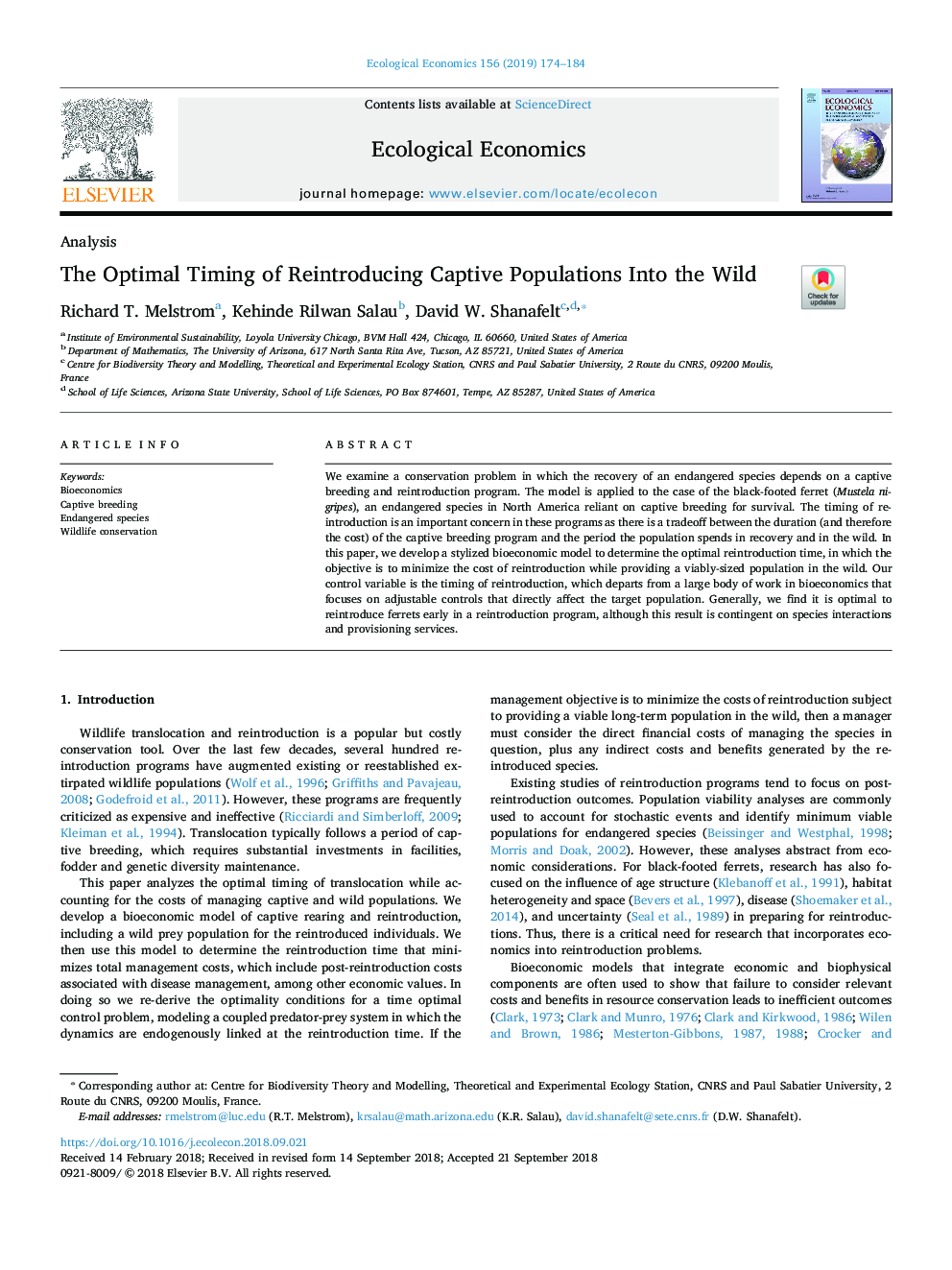| Article ID | Journal | Published Year | Pages | File Type |
|---|---|---|---|---|
| 11029793 | Ecological Economics | 2019 | 11 Pages |
Abstract
We examine a conservation problem in which the recovery of an endangered species depends on a captive breeding and reintroduction program. The model is applied to the case of the black-footed ferret (Mustela nigripes), an endangered species in North America reliant on captive breeding for survival. The timing of reintroduction is an important concern in these programs as there is a tradeoff between the duration (and therefore the cost) of the captive breeding program and the period the population spends in recovery and in the wild. In this paper, we develop a stylized bioeconomic model to determine the optimal reintroduction time, in which the objective is to minimize the cost of reintroduction while providing a viably-sized population in the wild. Our control variable is the timing of reintroduction, which departs from a large body of work in bioeconomics that focuses on adjustable controls that directly affect the target population. Generally, we find it is optimal to reintroduce ferrets early in a reintroduction program, although this result is contingent on species interactions and provisioning services.
Related Topics
Life Sciences
Agricultural and Biological Sciences
Ecology, Evolution, Behavior and Systematics
Authors
Richard T. Melstrom, Kehinde Rilwan Salau, David W. Shanafelt,
